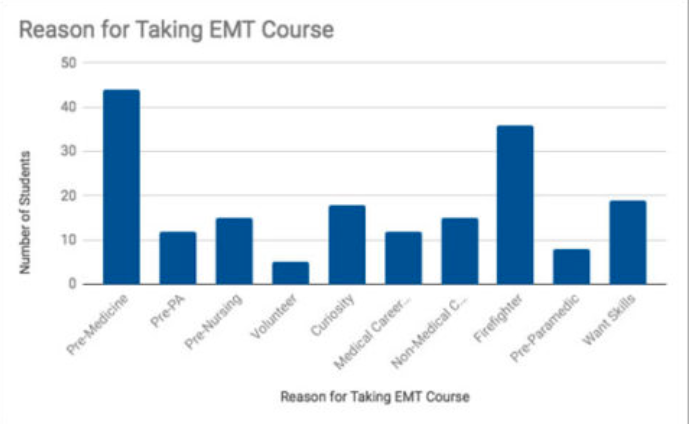Training to Save Lives: How to Become an EMT
What does it take to become an EMT?
Healthcare is a challenging industry to get into and becoming a first responder is no different. However, aspiring EMTs (Emergency Medical Technicians) are more than willing to take on the challenge than most.
An EMT’s work can be unpredictable, but it’s also exciting, fast-paced, and it’s been known to be one of the most rewarding professions. There’s a lot of room for career growth and advancement. The training EMTs receive is rigorous due to the numerous medical emergencies they face and high-pressure scenarios they must be prepared for. To that end, you have to have both the theoretical and practical skills and knowledge necessary to meet the demands of this field.

The following steps serve as a guide to the training it takes to become an EMT, and save lives.
Step 1: Familiarize Yourself with EMT Basic Requirements
Requirements for state-approved EMT training programs tend to vary from state to state. Therefore, it’s best to do your research and ask for additional information regarding the minimum requirements. For example, while it may not necessarily apply to all, most states will require potential EMT trainees to be 18 years old before they can start the program. Others may allow you to start training at 16 years old, though certification and licensing exams won’t be available until you turn 18.
Additionally, some schools may require you to start their programs only if you have a high school diploma or completed your GED. In some areas, a basic CPR course is required before starting formal EMT training. Be sure to double-check local state requirements. If you already have a school in mind, get in touch with them. They should be able to run down everything that you need to prepare for the program.
Step 2: Understanding What It Takes to Train as an EMT
Combining classroom education with practical clinical experience helps students bridge theoretical knowledge with the on-the-ground skills they need to deliver expert patient care. This is why it’s important to familiarize yourself with the various EMT programs offered by the different schools.
There are different levels of EMT training programs, from basic to intermediate, to more complex procedures as a paramedic. The program length depends on the level of training.
EMT-Basic training will usually take anywhere from 120 to 150 hours to complete. That translates roughly to a few months, depending on the pace of the school and the student’s ability to complete the courses. Intermediate programs covering more in-depth subjects and training take longer. Paramedics, however, are highly advanced emergency medical care providers, building upon their EMT education.
EMT-Basic training involves in-class theory with a strong focus on teaching students about the human body, understanding vital signs, and the relevance of patient history. Training also covers:
- Learning procedures for bloodborne pathogens
- A basic or refresher CPR course
- How to use ventilation and oxygen therapy
- Patient situational control.
For intermediate EMT training, expect to cover advanced airway devices, ventilatory management, intravenous therapy, and patient resuscitation. Paramedic programs normally require an associate’s degree, with training covering EKG interpretation, medication administration, and endotracheal intubations.
Typically, schools require additional hours solely focusing on lab work. This is followed by hands-on, on-the-job hospital and ambulance experience.
Step 3: Earning Your EMT Certification
Most states require EMT candidates to be certified by the National Registered Emergency Medical Technician (NREMT) before applying for a state license. This involves passing a test of approximately 70-120 multiple choice questions across subjects such as medical, obstetrics, gynecology, cardiology, resuscitation, airway, respiration, ventilation, trauma, and EMS operations.
A psychomotor exam is designed to evaluate your ability to think and act on your feet and usually covers patient assessment, spinal immobilization, bleeding control, and cardiac arrest management, usually via simulated scenarios.
Step 4: Getting Licensed By Your State
After earning your EMT certificate, your final step to be able to work as an EMT is obtaining your state license. All states require EMTs to be licensed. Licensing requirements vary from state to state and sometimes require prospective EMT graduates to pass a state-specific exam. Most states require EMT certification before applying for the EMT license.
EMTs are also required to be recertified every two to three years. To better understand state to state requirements, check with your local EMS agency.
From familiarizing yourself with basic EMT requirements and training programs, to earning an EMT certification and becoming licensed, the road to becoming an EMT is a rewarding one that leads to a big impact on saving lives.
To learn more about HCI’s EMT training programs, visit our website or get in touch with us.














